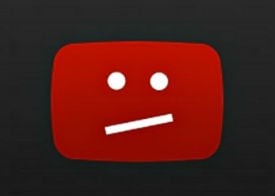 A class action lawsuit filed in 2020 by musician Maria Schneider against YouTube is showing no sign of a conclusion.
A class action lawsuit filed in 2020 by musician Maria Schneider against YouTube is showing no sign of a conclusion.
The complaint, which alleges mass infringement and serious deficiencies in YouTube’s copyright enforcement measures, has seen the exposure of fraud and calls from YouTube to have the whole case dismissed.
With the case now spanning three years, both sides are still willing to spend huge sums of money fighting their respective corners. Quite how the plaintiffs are able to match Google’s bottomless financial pit is unknown, but at times they are raising some interesting questions, some of which relate to YouTube’s DMCA safe harbor protections.
Documents Relating to YouTube’s ‘Autoplay’ Feature
Last month, counsel for Maria Schneider and the putative class filed a letter motion with US District Judge James Donato. In broad terms, it again claims that YouTube isn’t producing enough documents in a timely manner as part of discovery. Similar complaints have been made in the other direction too but this time around, the requests relate to an interesting legal theory.
The letter says that since October 2020, discovery requests relating to YouTube’s ‘Autoplay’ feature have resulted in the production of “less than a hundred” internal documents (including PowerPoint presentations) but no email or instant message communications. The plaintiffs want the court to compel the production of relevant documents since they relate to an important legal argument relating to YouTube’s liability for infringing content on its platform.
YouTube’s ‘Autoplay’ Feature and the DMCA’s Safe Harbor
In summary, the letter claims that when YouTube delivers videos to users that they did not specifically request, that undermines YouTube’s ‘safe harbor’ protections under the DMCA.
“Autoplay automatically plays videos for users without any affirmative acts by the user, i.e., no clicking of a link or selecting the next video to play, and is thus relevant to Plaintiffs’ claim that YouTube actively participates in copyright infringement and Defendants’ safe harbor defense under the Digital Millennium Copyright Act (‘DMCA’), 17 U.S.C. § 512,” the letter reads.
“AutoPlay’s functionality establishes that YouTube algorithmically selects and controls a substantial portion of the views on its platform, including views of content that infringe on Plaintiffs’ and the putative class’s copyrights.”
The plaintiffs say that the ‘Autoplay’ documents are relevant to their direct, inducement, contributory, and vicarious infringement claims because they will show that when YouTube “actively selects and displays infringing videos”, the platform is more than a passive participant and benefits from the dissemination of infringing content.
The safe harbor provision of the DMCA requires a service provider to show that it does not “receive a financial benefit directly attributable to the infringing activity” in cases where the service provider “has the right and ability to control such activity.”
The plaintiffs assert that since YouTube’s Autoplay has the ability to play infringing content, the “right and ability to control” aspect is established. Autoplay generates revenue for YouTube, so it “receives a financial benefit” too.
“The requested documents will thus show both Defendants’ participation in and control over infringing content on the YouTube platform and the extent to which Autoplay has financially benefitted YouTube through its advertising revenues,” the letter adds.
Discovery Dispute Hinged on a Single Word
According to the plaintiffs, an agreement was reached with YouTube for it to produce documents sufficient to show its policies concerning Autoplay, “including changes and proposed changes to Autoplay policies concerning copyright and revenue considerations.” (emphasis in original).
They state that several months later YouTube reneged on the agreement, claiming that it had agreed to produce documents concerning changes to policies only to the extent that such changes were driven by copyright or revenue considerations, if any. On these terms, YouTube reported that it had failed to locate any such documents so could not produce them.
“In short, Defendants are wrongfully withholding documents that are undisputedly relevant to both Plaintiffs’ infringement claims and Defendants’ failure to qualify for DMCA safe harbor,” the letter concludes.
Plaintiffs’ letter to the court can be found here (pdf)





